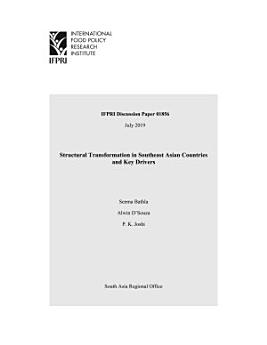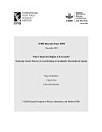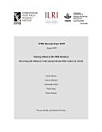Structural transformation in Southeast Asian countries and key drivers
Bathla, Seema · D'Souza, Alwin · Joshi, Pramod Kumar
IFPRI Discussion Paper Book 1 · Intl Food Policy Res Inst
5.0star
1 reviewreport
Ebook
45
Pages
family_home
Eligible
info
reportRatings and reviews aren’t verified Learn More
About this ebook
This study’s objective is to examine the factors that have driven structural transformation (ST) in the Southeast Asian (SEA) economies and the policies supporting the process. It sets the stage by evaluating the ST in each country, quantifying the contribution of “within sector” and “structural change” to overall productivity growth and estimating the turning points (TPs) to gauge the prospects of income convergence. Eight SEA countries, undergoing a steady rate of economic growth —Cambodia, Lao PDR, Myanmar, Viet Nam, Philippines, Malaysia, Indonesia, and Thailand (CLMVPMIT) are chosen for analysis. We find their progress on ST to be consistent with the theory and historical patterns experienced in several developed and developing countries. However, progress is diverse across these countries and lags behind developed countries, indicating that labor is not exiting agriculture as fast as agriculture’s share of value added has been declining. The ST has decreased from 49 percent in Thailand to almost 3 percent each in Cambodia and Malaysia during 1991 to 2016. Further, the contribution of within change to productivity, which was pivotal during the 1990s in each country is rather subdued during the 2000s, thereby giving comparative primacy to structural change. A relatively higher—57 to 80 percent—contribution of structural change in Cambodia and Lao PDR, together with productivity growth, may be explained by increasing migration and trade in nonagriculture products. We also find that while Lao PDR, Thailand, and Indonesia have reached their TPs, other nations, especially the poorer ones such as Viet Nam, Myanmar, and Philippines are predicted to take at least a decade towards this goal. Empirical analysis suggests ST in CLMVPMIT is positively driven by agricultural productivity, terms of trade, and public investments in infrastructure, with little role for rural to urban migration and market integration. Large inter-sectoral productivity differentials across SEA countries, other than in Cambodia and Malaysia, necessitates to accelerate agricultural disproportionate share of the labor force in agriculture through higher productivity.
Ratings and reviews
5.0
1 review
Anil Das
- Flag inappropriate
March 7, 2021
AAA
Rate this ebook
Tell us what you think.
Reading information
Smartphones and tablets
Install the Google Play Books app for Android and iPad/iPhone. It syncs automatically with your account and allows you to read online or offline wherever you are.
Laptops and computers
You can listen to audiobooks purchased on Google Play using your computer's web browser.
eReaders and other devices
To read on e-ink devices like Kobo eReaders, you'll need to download a file and transfer it to your device. Follow the detailed Help Center instructions to transfer the files to supported eReaders.









